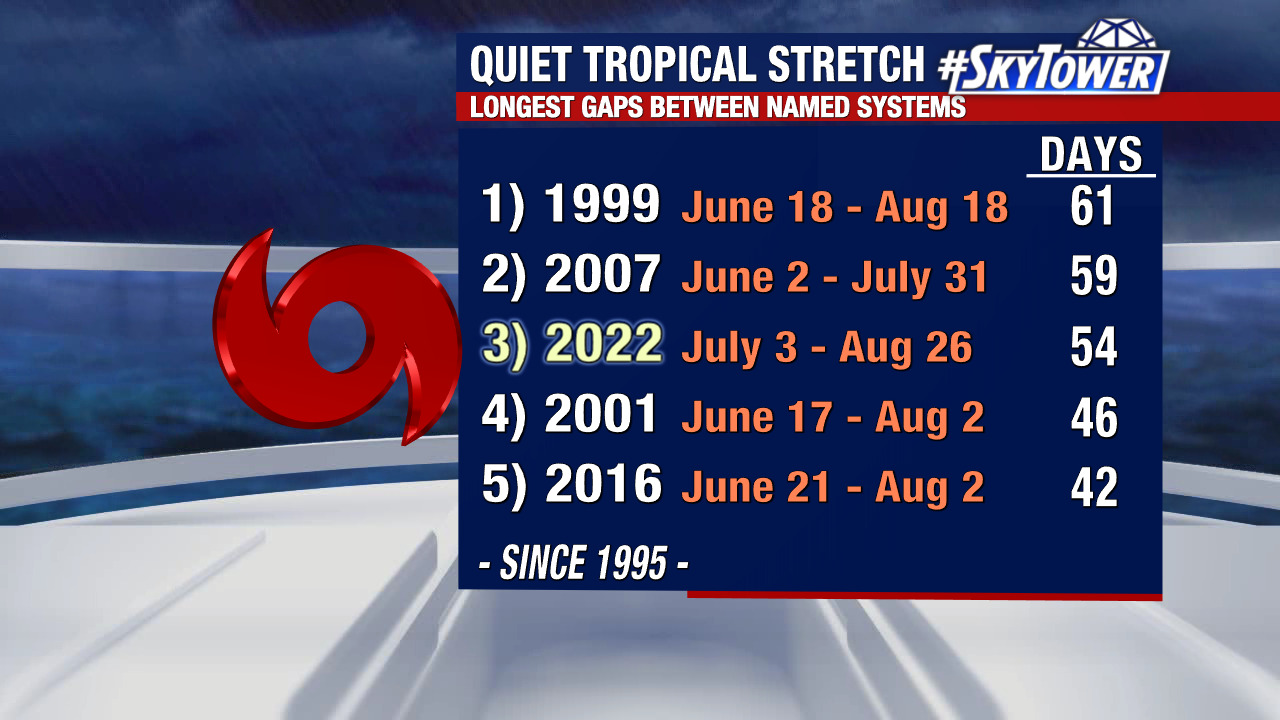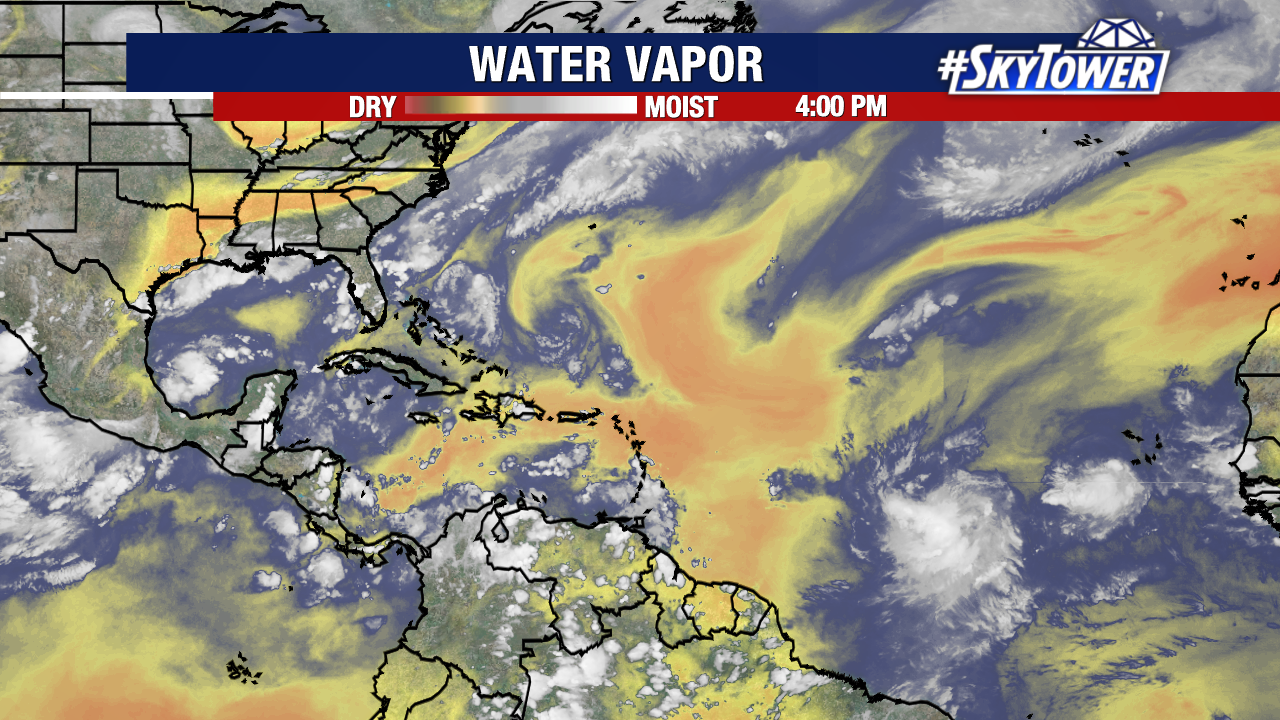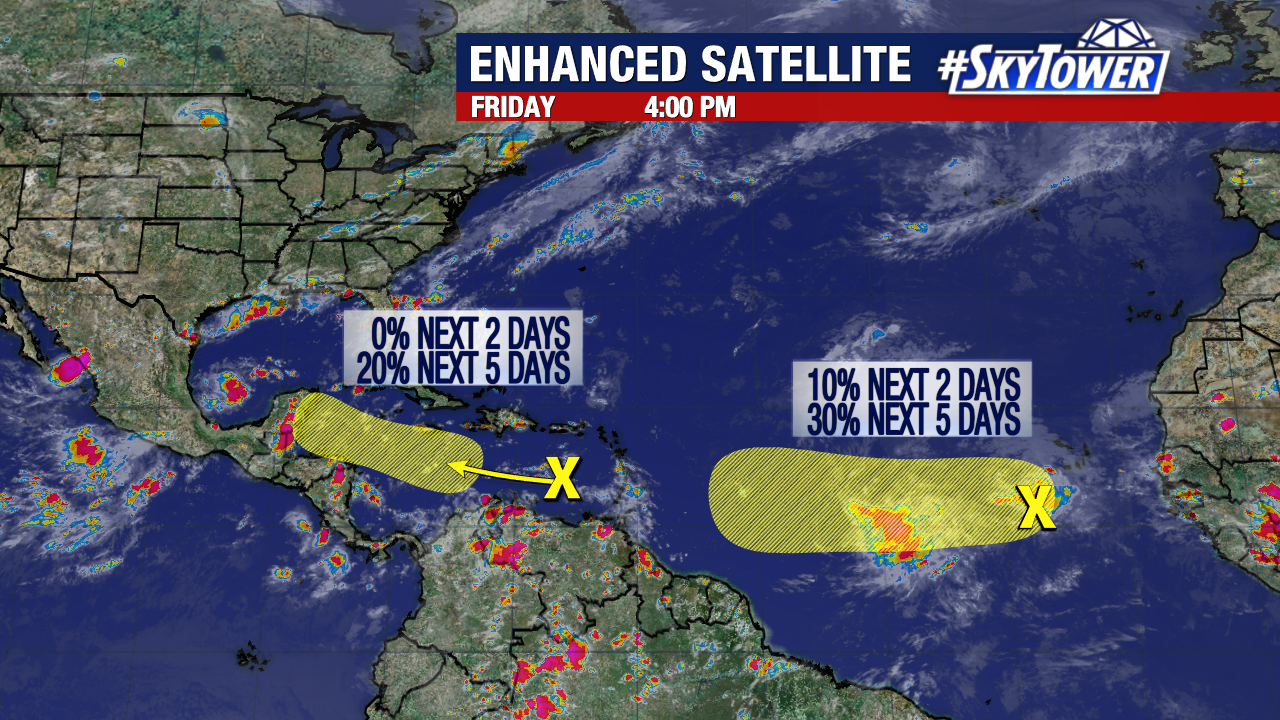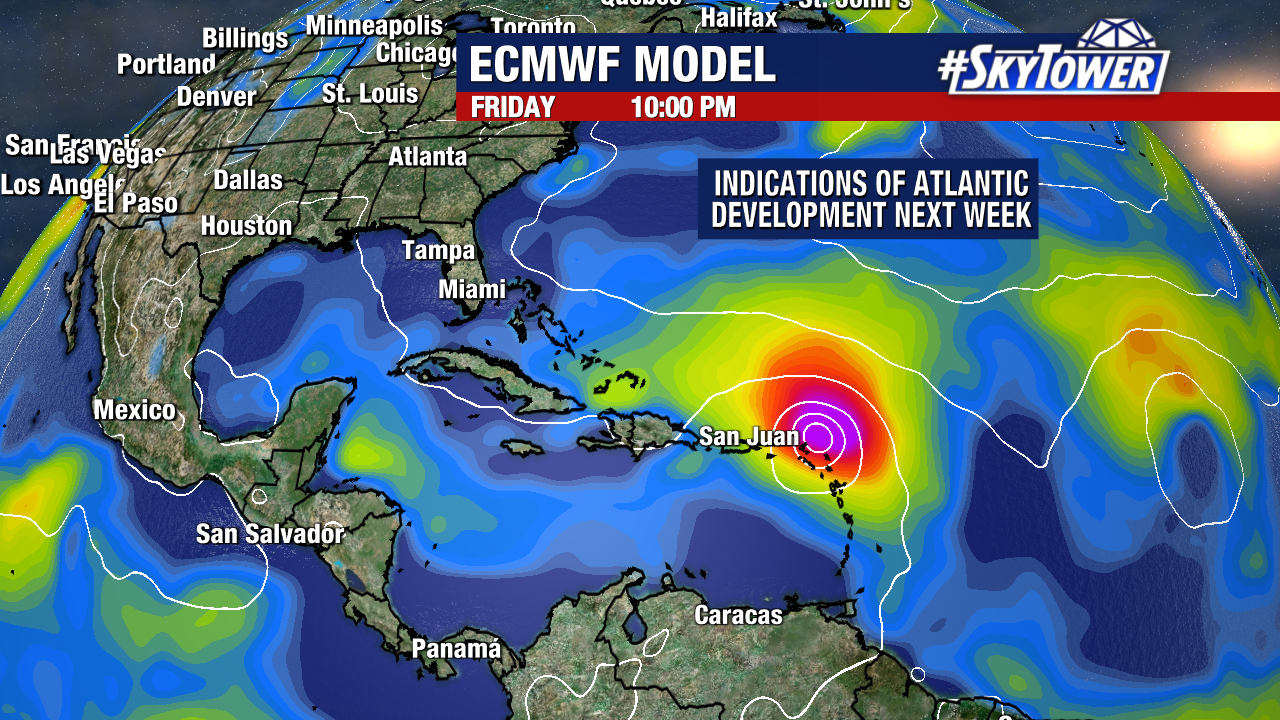Well the nearly two month quiet spell in the tropics was fun while it lasted. However, all signs are pointing to things becoming more active in the coming days and weeks. And with the official peak of the season just 2 weeks away, it is no surprise.
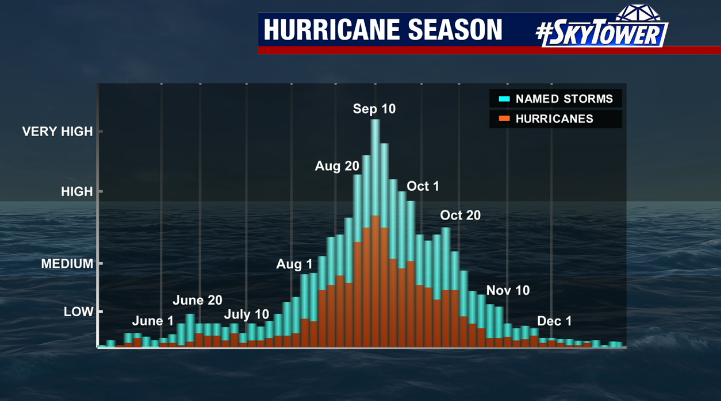
It bears noting how unusual it would be to close out the month of August without a single named storm. It hasn’t happened in 25 years. And that was an El Niño year which typically favors quieter activity in the tropics as compared to the typically more active La Niña years, which we are in now. And while an August shutout is a possibility, it will be close as a couple of tropical waves show some promise.
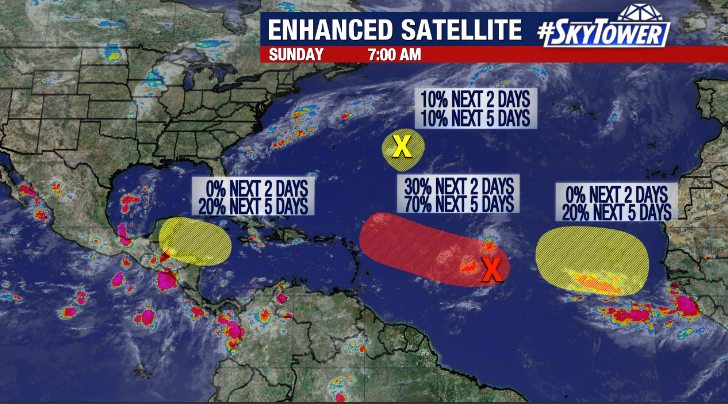
The area with the greatest odds of development is a disturbance over the Atlantic the National Hurricane Center has deemed Invest 91L and given a 70% chance of development over the next 5 days. Some dry air and wind shear could limit short term development. However, both the GFS and Euro models support the disturbance overcoming those factors and possibly developing into a tropical depression as it passes just northwest of the Leeward Islands by the end of the week. It is too early to determine if this area will have any impact on the US but certainly bears close watching.

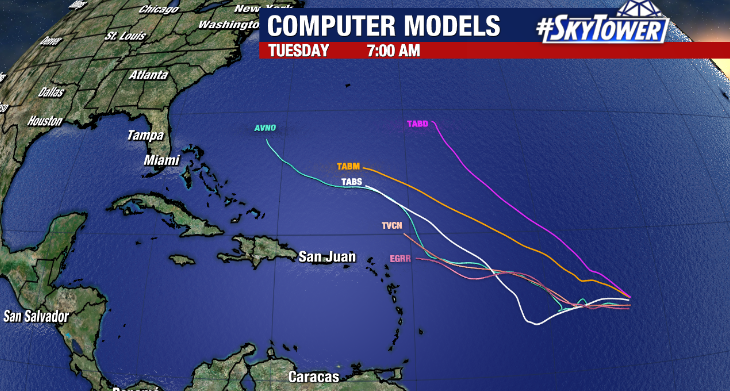
There is also an area of low pressure in the Caribbean Sea but the odds are just 20% for development. Additionally, other tropical waves in the central Atlantic and eastern Atlantic similarly have a low end chance of formation over the next 5 days, per the National Hurricane Center. While these aren’t high probabilities, it is certainly a sign the dormant days in the tropics are behind us and we have to be vigilant as things begin heating up across the Atlantic.

